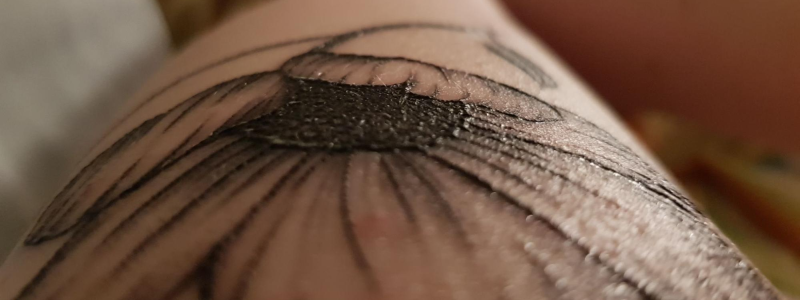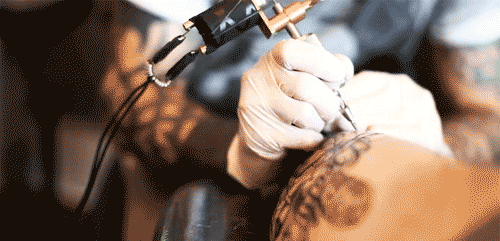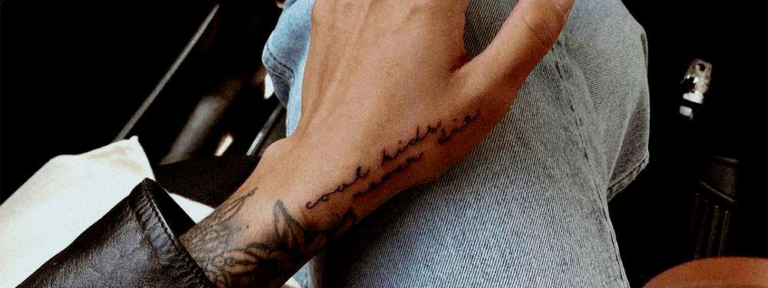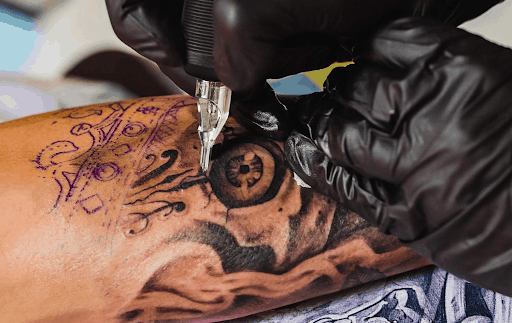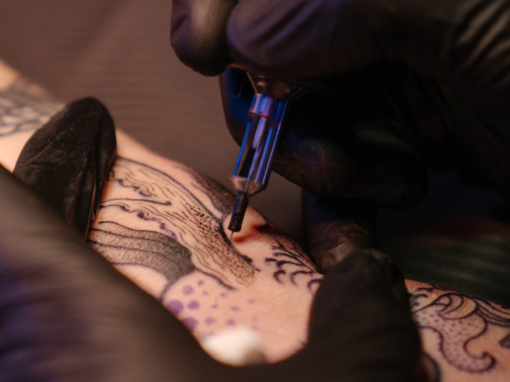Experiencing a raised tattoo is widespread because the ink will always be an extraneous body in your organism that will react to inner and outer changes. You can be afflicted with raised skin not only during the healing process but even randomly years later. So it’s vital to know possible raised ink causes and effective treatment for them.
In our article, we will consider in detail all the possible factors of such a problem and find detailed solutions. So, no worries, read it and get quick relief now.
Raised Tattoos: Causes and Possible Treatments
Body Chemistry
The human anatomy is different. The tattoo ink inserted into the skin is an extraneous body. If you are worried that something is wrong with the tattoo, or you are somehow to blame for this problem, it is not true, because most often such a reaction occurs through the body itself. The skin thus responds to an unusual way of damage and stress with a small swelling.
How To Treat
Be aware of the fact that your tattoo may remain raised for several days and this will be its normal reaction. That is, it does not mean that it is a negative reaction that includes symptoms of allergy or infection (it includes intense itch, redness, pain, bulges, blisters, and raised skin). Usually, the reaction takes up to 3 days. If it lasts longer, you should still talk to a medical professional and have your tattoo examined.
Weather Changes
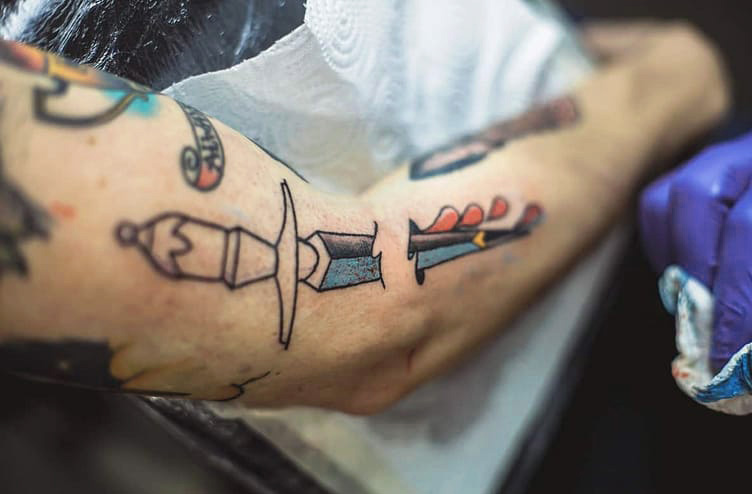
Remember that if your tattoo swells, it may be due to weather conditions. You have to understand which weather (warm or cold) causes your skin raising.
Warm weather increases the humidity, which often causes a slight swelling of the skin. This means that the skin stretches a bit, leading to subtle bulges and irritation.
When the temperature drops, the skin becomes dry. It is also often the case that the ink interacts with the cold, resulting in itching of the skin and rash.
How To Treat
If your tattoo gets raised during warm/hot temperatures, you can minimize your exposure to the sun. Remember that tattoos need to be well protected by covering them with clothing or using sunscreen. Keep the tattoo cool and avoid direct sunlight to reverse symptoms to some extent.
If a tattoo becomes raised because of cold temperatures, make sure to use a moisturizer and keep the tattooed skin hydrated.
Swelling
In addition, tattoos that were done by heavy-handed tattooists usually cause more bruising and swelling. More pressure is put on the skin, which eventually causes your body to respond through swelling.
How To Treat
To improve your condition and prevent unnecessary contact with the tattoo, it is advisable to apply ice to the swollen area. The swelling is normal and should disappear within a week without any lasting damage to the appearance of the tattoo. If it doesn’t subside after a few days, contact your doctor.
Tattoo Allergic Reaction
There are two common causes of allergic reactions: allergy to ink or tattoo artists’ latex gloves. It leads to swelling, irritation, and burning of the skin. These are the two most common causes of allergic reactions, leading to swelling, irritation, and burning of the skin.
How To Treat
Analyzing all cases of allergies, experts can say with confidence that this is not something serious and should pass in 2-3 weeks. If there is a risk of deterioration, it is recommended to use a local steroid ointment or use antihistamines. In case of progressive swelling, burning pain, vomiting, and other horrible symptoms, seek emergency medical attention!
Scarring
After you get a tattoo, you may experience side effects such as raised skin, small scars, and even changes in the tattoo itself that contains distortion or pitting. The general trend is that the more the skin is affected, the more raised it may be.
Often the cause of scars can be not just a reaction of the skin, but the ignorance of the tattoo artist, who does not know enough about the tattoo process and affected the tissues in the skin too deeply.
Moreover, if you neglect tattoo aftercare, it can be why your tattoo is raised. Proper sanitation of your ink pattern will make your skin resistant to scarring. Look at our tattoo aftercare rules here and stick to them.
How To Treat
Unfortunately, if this problem occurs, there is little you can do to help. Ask your artist for the tattoo redone via touch-up, but keep in mind that this can be done no sooner than the scar is completely healed (it can take months to years, depending on the characteristics of the body and the level of tissue damage). Unfortunately, there have been cases where the situation has only worsened after a tattoo was redone, so be aware of the possible consequences.
There are also temporary solutions that will not solve the problem forever but will help regenerate the damaged area: for example, makeup or hydrating lotions can considerably improve the condition of your skin. You can try to use a care product like Bio-Oil that increases skin elasticity and tone.
Tattoo Infection
If you notice symptoms such as redness, swelling, and the skin becomes raised and sore, it means that it is infected. There can be the following reasons:
- Low level of sanitation and sterilization of the workplace and tools of the tattoo artist.
- Perhaps the tattoo ink is contaminated.
- You did not follow safety rules and touched the tattoo with dirty hands.
There are often cases when the infection can affect not only the tattoo and the skin around it but also a much larger area, subsequently affecting the whole body. In most cases, it starts with a rash or angry red bump around the new tattoo. Common tattoo infections include abscesses, tissue necrosis, septic shock, toxic shock syndrome, cellulitis, etc. It can take 2-8 weeks for the wound to fully heal.
How To Treat
The first thing you need to do is see a doctor and explain your problem in detail to find a relevant solution. Your doctor will prescribe you antibiotics and proper treatment;
📃 To save your time and help you get quick relief, we prepared a table with crucial moments of the article. This table will help you identify the possible cause of the increased tattoo and the potential solution to this problem.
| Cause | How to treat | Warning signs you should see a doctor |
| 1. Unique body chemistry | There is no special medicine to treat it. Usually, the reaction passes on its own over 3 days. | If the tattoo causes you pain or discomfort, pay a visit to your doctor immediately. |
| 2. Weather conditions | Minimize your exposure to the sun during warm/hot temperatures; In cold temperatures, do not forget to constantly moisturize the skin with a tattoo to prevent dehydration. | The process of healing depends on weather conditions. No needs to see a doctor. |
| 3. Swelling | Try icing the area and avoid any tattoo touches; Predominately, it takes 2-3 days to subside without medical intervention. | If the swelling does not go away even after a few days, you must seek medical help. |
| 4. Scarring | Scarring is a permanent cause. It won’t fade over time; Try to ask your artist for the tattoo redone via touch-up, but there is a risk of getting even more scarring this way; Use There is no need for a doctor’s consultation. |
|
| 5. Allergic reactions | Apply a topical steroid ointment or use antihistamines; Generally, it subsides within about two or three weeks. | In case of progressive swelling, burning pain, vomiting, seek emergency medical attention! |
| 6. Tattoo infections | The first and most useful thing to do is to see a doctor. You will be given the necessary medical care and prescribed antibiotics or other drugs to help you. The healing process lasts 2-8 weeks. | If your tattoo starts to turn red, swell, rise, and hurt, be sure to seek medical attention immediately. |
Tips for Long-Term Tattoo Aftercare
Ignoring the hygiene rules after getting a tattoo can be one of the possible causes of raised skin. To prevent your tattoo from being raised, we prepared some essential tips on how to take care of such body art. While your tattoo is healing, we advise you to pay attention to dos and don’ts and follow them carefully.
DO’S
- Listen to your tattoo artist’s instructions;
- Wash your tattoo with a bar of mild antibacterial soap;
- Dry your tattoo with a fresh towel paper towel or antimicrobial washcloths for tattoos;
- Apply an anti-inflammatory balm to reduce swelling and redness. Pain-relieving gels and creams may provide additional comfort;
- Keep applying a moisturizer or ointment after you clean it to keep it moist;
- Let your tattoo breathe to help with healing;
- Wear loose-fitting clothing, if possible, to prevent the fabric from pressing against your tattoo;
- If the pain worsens, seek medical attention.
DON’TS
- In the bright sun, hide your tattoo under your clothing or be in the shade;
- Don’t remove your bandage too soon! Keep your tattoo covered for as long as your artist recommends;
- After getting a tattoo, do not do strenuous exercise for at least 48 hours;
- Don’t use hot water to clean your new tattoo; wash with warm water instead. Hot water will cause your pores to open, leaving a new tattoo susceptible to bacterial infection;
- Do not stay in the water for a long time, forget about swimming and soaking in the bath until the tattoo is healed;
- Do not cause any physical damage to the skin with the tattoo (scratching, rubbing, etc.), as this will adversely affect your tattoo;
- Do not shave the area of the skin with the tattoo to prevent damage;
- Don’t re-bandage or cover your new tattoo. The area of skin with the tattoo should breathe and stay dry to heal as soon as possible.
Summary

Tattoos are works of art that will stay on your body for the rest of your life. You should know everything about them, including raising and irritation reasons. In general, raised, bumpy, and lumpy tattoos are a normal skin reaction during their healing. The same reaction can occur even on older tattoos.
Do not panic, thinking that your skin will become raised. Just before the procedure, make sure the tattoo artist’s tools are sterilized, follow all his recommendations, do not expose the tattoo to direct sunlight, and moisturize enough in cold weather. If this type of reaction still occurs, see a doctor immediately.
FAQ
⌛️ How Long Does a Raised Tattoo Last?
Tattoos issue signs like raising or irritation usually take a couple of days to a couple of weeks to go away. If nothing has happened after 5-7 days, or raising is If the problem does not go away in 5-7 days, you should seek medical help.
🙋 Is It Okay That My Tattoo Is Raised?
It’s normal for a tattoo to stay raised for a few days, but if the skin around it swells, it’s not good, so don’t try picking, scratching or peeling it. You could get an infection or remove the color. If you think your tattoo is infected or isn’t healing properly, see your doctor.
🧐 What Does It Mean When a Tattoo Is Raised?
If your tattoo is raised, it means that the area of your pattern is located above the normal position of the skin. It is often accompanied by redness and itching. Take a look here to find detailed information about the most common factors that can cause tattoo raising.
⏳ How Long Should I Care for a Tattoo After I Get It?
After getting a tattoo, the epidermis part, where a pattern is, will typically heal within 3 to 6 weeks. Don’t try scratching or peeling off the skin after its full recovery. Doctors also recommend moisturizing the skin from two weeks to a month to heal the tattoo faster and more effectively.
